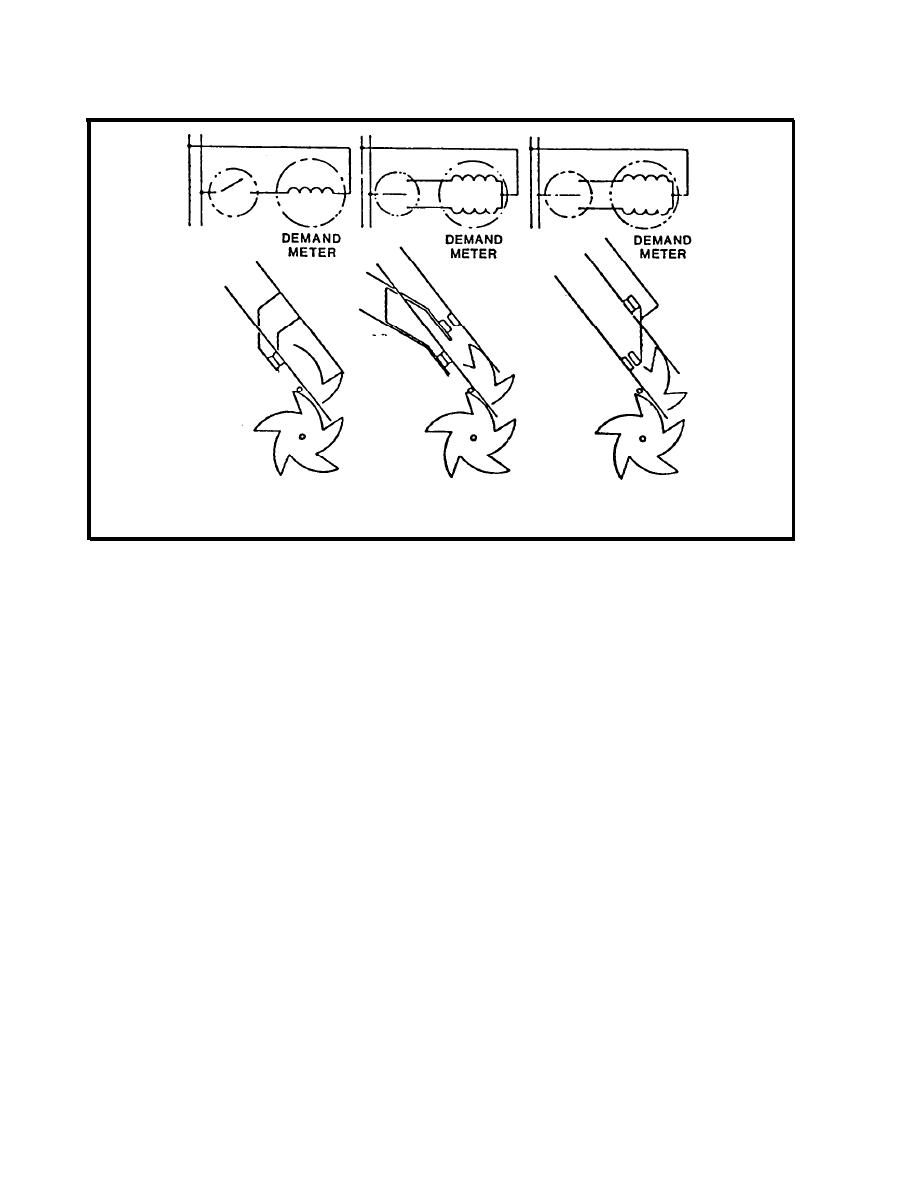

Custom Search
|
|

|
||
 THREE-WIRE
THREE-WIRE
TWOWIRE
QUICK-MAKE,
QUICK-MAKE,
QUICK-MAKE,
SLOW-BREAK TYPE
QUICK-BREAK TYPE
QUICK-BREAK TYPE
FIGURE 9-12.
Contact Device Configurations
and the gear ratio from the meter rotor to the cam. These tables are
available from the manufacturer. The disadvantages of contact devices have
limited their installation in newer , more sensitive watthour meters. Newer
meters produce lower torque per kilowatt and thus are more affected by
frictional forces imposed by the cam operated switch. The increased
requirement for higher pulse rates and lower spring tension on the contact
have proven to increase maintenance problems. Nonmercury-wetted switch
contacts experience bounce.
3.1.2 Pulse Initiators. The disadvantages of contact devices are absent in
pulse initiator designs. A pulse initiator consists of a revolving shutter
disk operated by a standard watthour meter geartrain. The disk, acting as a
shutter, interrupts a beam of light to activate a photocell. Figure 9-13
shows the basic configuration of a shutter and the placement of the photocell
and light source. The device is essentially frictionless and gives the same
switch output as a contact initiator through a mercury-wetted relay. The
bounceless contact closure data from pulse initiators are designed to
interface with older pulse-totalizing equipment. Pulse initiator modules can
be retrofitted to most watthour meters. A typical pulse initiator has one
shutter disk with ten slots, producing one pulse per slot. Shutters are
available with two, four, six, or eight slots.
9-25
|
 
|
|
 |
||